Reviews
La Peau douce
François Truffaut
France, 1964
Credits
Review by Evan Kindley
Posted on 06 April 2010
Source Fox Lorber DVD
By 1964 François Truffaut had made a name for himself as the patron saint of youthful exuberance, so it was probably something of a surprise when he released a film as brooding, understated, and adult as The Soft Skin. While Truffaut’s penchant for melancholy was evident as early as The 400 Blows, critics and audiences had tended to focus on the elements in his films that reflected the excitement and vitality of youth. The Soft Skin has none of the freewheeling ebullience of Truffaut’s first movies; it’s as if the exhilaration of being behind the camera had finally worn off, revealing a much more troubled, and troubling, sensibility.
Suggested by a number of newspaper items that Truffaut had compiled over the years, but perhaps also by his own failing marriage, the film tells the story of literary critic Pierre Lachenay and his adulterous liaison with Nicole, a young airline hostess who he meets on a business trip to Portugal. As Lachenay, Truffaut cast middle-aged Comédie-Française star Jean Desailly, who, with his soft twinkling eyes, pudding-white complexion, and immaculate grooming, makes a very different kind of protagonist from the raffish underdogs who populate Truffaut’s first three films. Where previously Truffaut had focused on figures at the margins of society, Lachenay is a comfortable bourgeois success, a distinguished literary publisher and author of a famous monograph on Balzac who is invited to speak in foreign countries and idolized by young intellectuals. Similarly, Nicole — played by Catherine Deneuve’s ravishing elder sister Françoise Dorléac, who was killed in a car accident three years later — is a new kind of heroine for Truffaut, much more reserved and unsure of herself than the more vibrant young women depicted in Shoot the Piano Player and Jules and Jim.
Such departures from his established style exposed Truffaut to accusations of selling out by appealing to older, more “respectable” crowd. If this was his intention, he failed; the film was a distinct commercial disappointment. But ironically, while The Soft Skin is in some ways a more traditional or “classical” production than his first three efforts, in other ways it’s more modern: for one thing, there is much more evidence of the postwar world in The Soft Skin than in Truffaut’s early movies. While The 400 Blows and Shoot the Piano Player were ostensibly set in the present day, neither underlined that fact, and both were just as preoccupied with previous historical moments (Truffaut’s Occupation-era childhood in the former case, the fantasy 1930s of the American “B” gangster movie in the latter); Jules and Jim, of course, was an actual period piece. (Add to this the fact that Paris is, architecturally, basically a nineteenth-century city with a little post-industrial filigree laid over it.) But in The Soft Skin we see Truffaut for the first time looking around him and thinking about the world in which he lives, a world of airplanes, elevators, television personalities, and lecture tours. The film begins with a Hitchcockian dash to the Orly airport that recalls the opening scenes in the then-recent Psycho, immediately placing us in the latter half of the twentieth century as none of Truffaut’s earlier films have. Commenting on his characters in 1967, Truffaut stressed the asymmetries between them:
What interested me in The Soft Skin was to show an anachronistic character. I really kept thinking: I have to show a character from the nineteenth century, and what is furthest from a nineteenth-century character is an air hostess … It’s that opposition which pleased me … I was inspired by a man more at ease with the dead, the onetime glories, than with the world of today. 1
This forced contrast between traditional and modern, old and young, presents itself as a new preoccupation in The Soft Skin, which is still a film about youth, but youth viewed from the outside rather than from within. At a number of moments Truffaut quietly points to the generation gap that was opening up in the early sixties. Nicole respects Pierre’s eminence but has no real interest in the classic literature he represents. Pierre is clearly excited by Nicole’s youth but also a little disapproving of her looseness: in one scene he watches her dance to yé-yé music without feeling capable of joining in himself; and in another, he convinces her to change out of her jeans and into a skirt (“I prefer you in dresses”).
Truffaut himself was thirty-two at the time of filming, about halfway between his two characters, and this may have helped him capture the disconnection between them as well as the mutual yearning. The love scenes between Pierre and Nicole play with a certain hesitant tenderness that Truffaut had already begun to explore in Shoot the Piano Player, but which he exploits more fully here. While clearly infatuated with one another, they also seem a little wary of each other, never quite giving themselves over to passion or even relaxing in one another’s presence. The film’s title implies erotic desire but also emotional vulnerability,2 and Pierre and Nicole, far from being the confident lovers of the standard romantic melodrama, are both painfully shy people, approaching their roles with trepidation, worried about making mistakes.
It’s subtleties like these that belie the slickness that some contemporary reviewers complained of in The Soft Skin. After the swaggering confidence of Jules and Jim, Truffaut’s direction — so careful, so restrained, so afraid to put a foot wrong — has a kind of hemmed-in quality that perfectly matches the reserve of the couple at its center. On the one hand, Truffaut was clearly aiming at a greater professionalism: in the press materials for the film he expressed a wish to make the film less like a “sinking ship” and more like a “train running across the countryside,” yet another expression of a conflicted desire to modernize. But the techniques he favors are strange ones for the material: The Soft Skin, made as he was preparing his book-length interview with Alfred Hitchcock, is a love story shot in the style of a crime thriller, an unorthodox combination that probably worked against the movie’s commercial prospects. While his early movies supplemented a base-line classicism with a tendency toward frantic invention and elaboration, The Soft Skin unfolds at a slower pace and develops an interest in the moments between actions, a feel for hesitation and suspense. An extended sequence set in the city of Reims, where Pierre, who has been invited to introduce a documentary about the novelist André Gide, tries to hide his affair with Nicole from his hosts, is riven by a tension that owes everything to Hitchcock’s example, even if it’s animated by emotions that are quite different from those the elder director concerned himself with.
If The Soft Skin was really Truffaut’s attempt to put away childish things, it’s remarkable how somber a vision of adulthood it imagines. The last act, which moves from a tight focus on Lachenay and Nicole towards Pierre’s wife Franca, is more melodramatic than what precedes it, and the film’s surprisingly violent ending hints at a tragic sensibility that Truffaut would downplay in the films that followed, allowing it to resurface only in the 70s with films like Two English Girls and The Story of Adele H. In fact Truffaut would spend the rest of the sixties returning to the themes, if not the tone, of The Soft Skin under the cover of a number of different genres and styles: revenge in The Bride Wore Black, the disorientation of travel in Mississippi Mermaid, the promise of culture in Fahrenheit 451 and The Wild Child, and the dissatisfactions of both fidelity and infidelity in Bed and Board. Neither Truffaut’s most energetic movie nor his most accomplished, The Soft Skin provides representation of a darker, more fatalistic side of the director’s personality, one that can sometimes be obscured by his brilliance at pleasing crowds.
- Truffaut by Truffaut, ed. Dominique Rabourdin, 87. ↩
- Truffaut was a little ambiguous on this point; see his letter of January 1964 to his American friend Helen Scott: “La Peau douce? The title has no special meaning. It has a slightly sensual connotation, but it isn’t a double entendre. On the other hand, the contrary French expression ‘la peau dure’ does have a double meaning. To have a hard skin means being able to withstand life’s misfortunes” (Correspondence, 232). Funnily enough, Pauline Kael had already dubbed Charlie in Shoot the Piano Player “the thinnest-skinned of modern heroes” a couple of years earlier (I Lost it at the Movies, 211). ↩
More Love on the Run: The Films of François Truffaut
-

Les Mistons
1957 -
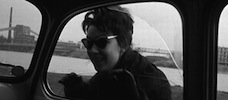
Une histoire d’eau
1958 -
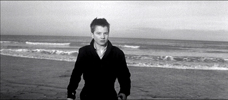
The 400 Blows
1959 -
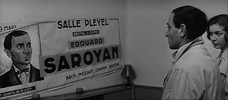
Shoot the Piano Player
1960 -
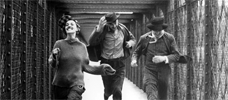
Jules and Jim
1962 -
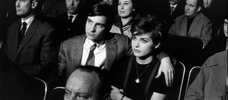
Antoine and Colette
1962 -
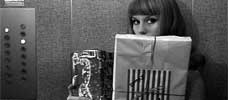
The Soft Skin
1964 -
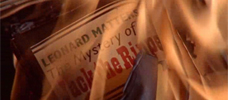
Fahrenheit 451
1966 -
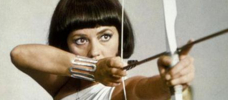
The Bride Wore Black
1968 -
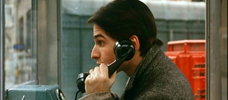
Stolen Kisses
1968 -
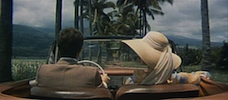
Mississippi Mermaid
1969 -
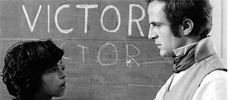
The Wild Child
1970 -
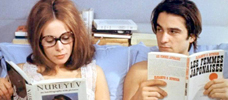
Bed and Board
1970 -
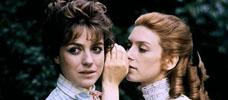
Two English Girls
1971 -
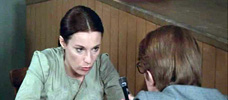
Such A Gorgeous Kid Like Me
1972 -

Day for Night
1973 -
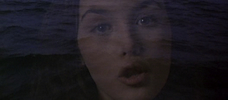
The Story of Adele H.
1975 -

Small Change
1976 -
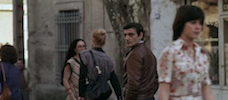
The Man Who Loved Women
1977 -
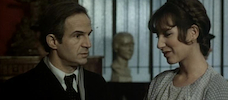
The Green Room
1978 -
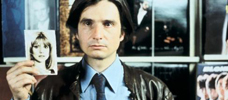
Love on the Run
1979 -
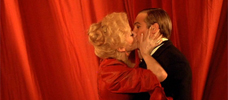
The Last Metro
1980 -
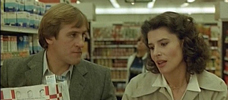
The Woman Next Door
1981 -
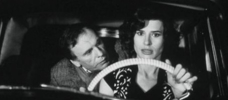
Confidentially Yours!
1983
We don’t do comments anymore, but you may contact us here or find us on Twitter or Facebook.



